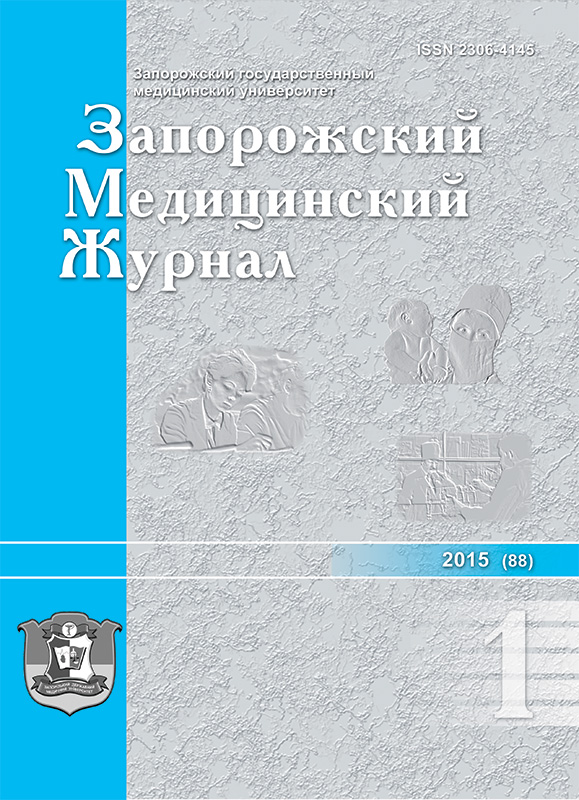Reducing the impact of professional risks on health of workers of modernized metallurgical concern
DOI:
https://doi.org/10.14739/2310-1210.2015.1.39731Keywords:
Risk Factors, Occupational Health, Risk ManagementAbstract
Modernization of enterprises aiming at improving the working conditions and reducing the influence of occupational risks to workers is important element of prophylaxes of occupational diseases.
Aim. To study consequences of modernization of the factory of agglomerate on the working conditions of agglomerate workers comprehensive evaluation of working conditions at a new sinter machine № 1 and at a new workplace of the agglomerate worker has been carried out using laboratory and instrumental methods.
Methods and results. It has been established that the working conditions at a new workplace of the employee of agglomerate improved significantly and has got 2nd class of the working conditions, that is acceptable.
Conclusion. It gives the evidence of modernization effectiveness and reduction of occupational risks at a new workplace.
References
Nahorna, A. M., Vitte, P. M., Sokolova, M. P., Kononova, I. H., Orekhova, O. V., & Mazur, V. V. (2012) Otsinka ryzyku rozvytku profesiinykh zakhvoriuvan u pratsivnykiv metalurhiinoi, vuhilnoi promyslovosti ta mashynobuduvannia Ukrainy [Assessment of risk development of occupational diseases in workers of metallurgic, mining industries and machine building Ukraine]. Ukrainskyi zhurnal z problem medytsyny pratsi, 3(31), 3–13. [in Ukrainian].
Karnaukh, M. G., Kovalchuk, T. A., Valutsyna, V. M., Oriekhova, O. V., Yashchenko, A. B., & Rubtsov, R. V. (2009). Umovy pratsi i zdorov’ia metalurhiv [Working conditions and health of metallurgists]. Karnaukh M. G. (Ed). Kryvyi Rih. [in Ukrainian].
Pavlenko, O. I. (2012) Otsinka zahalnoi zakhvoriuvanosti pratsivnykiv osnovnykh tsekhiv metalurhiinoho vyrobnytstva [Assessment of general morbidity of workers of main shops in metallurgical production]. Ukrainskyi zhurnal z problem medytsyny pratsi, 4(33), 11–23. [in Ukrainian].
Gapon, V. O., & Alyokhina, T. M. (2005) Hihiienichna otsinka umov pratsi pry vyplavtsi lehovanykh marhantsem stalei u martenivskykh tsekhakh [Assessment of Hygienic work conditions in smelting doped steels with manganese in open-hearth plants]. Ukrainskyi zhurnal z problem medytsyny pratsi, 2, 20–22. [in Ukrainian].
Basanets, A. V., & Lubyanova, I. P. (2009) Problemy profesiinoi patolohii ta shliakhy yikh vyrishennia na suchasnomu etapi [Problems of occupational pathology and ways of their solving at the modern stage]. Ukrainskyi zhurnal z problem medytsyny pratsi, 1(17), 3–12. [in Ukrainian].
(2001) Hihiienichna klasyfikatsiia pratsi za pokaznykamy shkidlyvosti ta nebezpechnosti faktoriv vyrobnychoho seredovyshcha, vazhkosti ta napruzhenosti trudovoho protsesu [Hygienic classification of work in terms of hazard and risk factors of production environment, severity and intensity of the labor process], (2001, December 27). [in Ukrainian].
Kundiev, Yu. I., Yavorovskii, O. P., Shevchenko, A. M., Veremei, M. I., Vertelenko, M. V., Honcharuk, H. O., et al. (2011) Hihiiena pratsi [Hygiene of work]. Yu. I. Kundiev, O. P. Yavorovskii (Eds.). Kyiv: Medytsyna. [in Ukrainian].
Downloads
How to Cite
Issue
Section
License
Authors who publish with this journal agree to the following terms:
Authors retain copyright and grant the journal right of first publication with the work simultaneously licensed under a Creative Commons Attribution License that allows others to share the work with an acknowledgement of the work's authorship and initial publication in this journal. 

